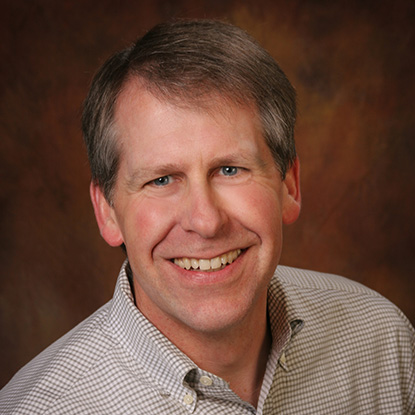I am a native of Washington, having grown up on the west side of the state. After high school, I pursued college, a Master's degree, and a variety of work experiences on the east coast, in northern lower Michigan, and on Alaska's arctic coastal plain. I then completed my Ph.D. at the University of California, Davis, taught for a year and a half at Pomona College in Claremont, California, and had a postdoctoral position at the Rancho Santa Ana Botanic Garden, also in Claremont. I'm happy to be back in the Pacific Northwest, where I can enjoy all that this beautiful part of the country has to offer. I have two brilliant and beautiful kids who are beginning to make their own ways in the world, and I am married to Linda Beane-Boose, Professor Emerita of French at St. Norbert College, and now Dean of Humanities at Spokane Falls Community College.
One of my favorite definitions of teaching is that it is “leading students into situations they can only escape from by thinking,” and this forms the core of my philosophy of teaching. The statement emphasizes the role of the teacher as one who guides and challenges, rather than serving as a font of knowledge. It suggests intentionality, in that I have to know where I am leading my students and why, and it embodies the belief that learning is doing—it is thinking and solving problems, not sitting and listening, or even reading.
So my job is to intentionally create environments in which students are forced to confront authentic, relevant problems that are important to them, and to guide them as they work collaboratively toward solutions. Because the world and my students keep changing, I need to be constantly reflecting on what I want students to be learning, what they should be doing to facilitate that learning, and how I can tell if I’m being successful. These principles—intentionality; authentic, relevant questions; collaboration, and reflection—drive all aspects of my teaching, from what I do on a daily basis in the classroom, to course and curriculum design with my colleagues in the department and the university.
In general, I teach courses related to ecology, evolution, population and quantitative genetics, conservation, and environmental science. Those include BIOL 105 (Information Flow in Biological Systems), and BIOL 106 (Energy Flow in Biological Systems) as well as several upper-division courses. I also developed a course for non-science majors called "The Biology of Food", which unites my enjoyment of teaching with a couple of my favorite pastimes--cooking and eating.
When I joined Maureen Stanton's laboratory as a Ph.D. student at UC Davis, she told the other members of her lab at the time, "He's interested in fitness questions. He doesn't know it yet, but he is." (Thanks to my lab mate Laura Galloway for relating that to me.) Turns out, she was right.
In general, I am interested in the ecological processes that lead to evolutionary change in populations. In practice, that has meant that I have used molecular genetic tools to look at patterns of genetic variation within and among populations, and to try to infer or hypothesize the mechanisms that have created and maintain that variation. In other words, I'm interested in fitness questions.
As I have progressed in my career, I have taken on more administrative positions, and am currently the Chair of the Biology Department. As a result, I no longer have active research projects going on. Here is a summary of some of the things I have done in the past:
My most recent project focused on the ecology, conservation, and restoration of rare plant populations in the Inland Northwest. Specifically, I worked with the U.S. Forest Service and the U.S. Bureau of Land Management on a project on MacFarlane’s Four-O-Clock (Mirabilis macfarlanei), a federally listed perennial plant that occurs only in the canyons of the Snake, Salmon, and Imnaha Rivers in Idaho and Oregon. In summer 2017, I collected soil samples from sites where M. macfarlanei occurs, for physical and chemical analysis. I also placed probes and data collectors to monitor soil moisture and soil temperature from summer 2017 – summer 2018. The goal is to better understand the habitat conditions experienced by current populations, with the hope of potentially establishing new populations to increase the abundance of the species and speed it toward recovery.
Previously, I worked with my colleague Julie Beckstead and collaborators in Utah, studying Pyrenophora semeniperda, a fungus that infects the seeds of native and introduced grasses in the western U.S. The fungus, known by its fans as "Black Fingers of Death" for the distinctive black reproductive structures it makes, is a potential biocontrol agent for cheatgrass (Bromus tectorum), a highly invasive annual grass. As part of this effort, my students and I cultured the fungus from seeds collected at a wide range of sites across the Intermountain West. We (i.e., my students) isolated DNA from the cultures and examined sequence variation in the Internal Transcribed Spacer region (ITS) of the ribosomal genome. That work was published in 2009 in Mycologia; you can read the article here.
Before that, I worked for a number of years examining genetic diversity in plants that inhabit ephemeral wetlands known as vernal pools. Vernal pools are shallow depressions that fill with water in the spring and become completely dry by the early summer. The animals and plants that live in these habitats have evolved life cycles and other adaptations that allow them to survive this drastic change in conditions. As a result, many of the plants and animals that live in vernal pools are found only in vernal pools.

